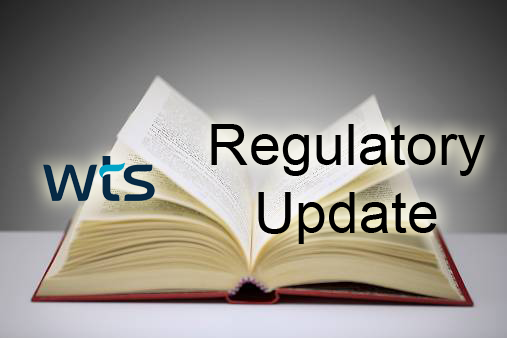With growing pressure and concerns over the proper management of PFAS waste, WTS, Inc. acknowledges the need to objectively and responsibly select the best available technologies and service solutions for the handling, treatment and disposal of solid waste and wastewaters, as well as air emissions, containing per- and polyfluoroalkyl substances (PFAS). These technologies and service solutions are increasingly being scrutinized in relation to their ability to mitigate the short and long-term risks posed by PFAS wastes to human health and the environment. The risks posed by discarded consumer goods (such as carpets, food packaging, household cleaning products, cookware, coatings, firefighting foams as well as production and treatment waste containing these PFAS) are influencing legislation, the evolving regulatory framework, and waste management economics. All of this poses challenges to operators of commercial and mobile wastewater treatment technologies, landfills, biosolid composting and thermal processing operations, thermal incinerators, cement kilns, waste-to-energy operations as well as a growing number advanced chemical recycling operations.
While PFAS continue to be banned from commercial products, there are a vast array of different PFAS applications many of which are important ingredients of today’s products. The economic impacts of using demonstrated technologies are challenging industrial generators, government agencies, the commercial waste management sector and the public as to what can be done to responsibly manage PFAS wastes from the following major categorical sources of PFAS, namely:
- Fire training /fire response facilities and airports
- Industrial/Consumer goods manufacturing facilities
- Landfills, recycling and thermal destruction operations,
- Wastewater treatment, biosolid thermal processing and composting operations, as well as,
- Remediation Sites mitigating emissions, stormwater, groundwater, and contaminated soils.
Within the commercial waste management sector, solid waste landfills have been employed for the disposal of PFAS waste, including discarded consumer goods, sludges and soils associated with remediation projects. As the risks posed by PFAS before more clear landfill operators are increasingly challenged to address the migration of PFAS compounds. This will likely impact the management of landfill leachate, stormwater, landfill gas emissions, groundwater monitoring programs and the treatment of facility effluents.
High temperature incinerators providing thermal destruction are currently the preferred and best demonstrated available technology for PFAS waste by some. Incinerators can be designed to breakdown PFAS compounds into chemicals that can be managed without increasing risks. Thermal treatment facilities (such as high temperature incinerators, cement kilns, waste-to-energy facilities, and biosolid thermal processing operations) are under intense scrutiny to ensure adequate temperature and residence time to validate destruction efficiency while ensuring quality criteria are in place to determine the acceptance of different forms of PFAS waste and the abatement of air emissions. The economics of this approach pose significant challenges for generators of high volume PFAS wastes, limiting technology use for industrial wastewaters and contaminated soils.
PFAS-contaminated wastewaters like production wastewaters, industrial effluents, stormwater, landfill leachate and groundwater are being treated using an array of technologies including thermal incineration, activated carbon, ion exchange resins, and high pressure membranes like reverse osmosis. Carbon adsorption and resin adsorption have been most commonly applied; however the physical properties and chemical composition of these wastewaters will influence technology selection and the effectiveness of the technology in removing PFAS. Furthermore, the spent media with PFAS compounds requires further treatment, for example, thermal processing.
Chemical oxidation, electro-oxidation, soil washing, and pyrolysis are among the emerging technologies to treat and, in some cases, destroy PFAS. A number of these emerging technologies are focused on mobile applications supporting remediation efforts encompassing contaminated soils, groundwater and drinking water. Many of these technologies are still in the early stages of development and their feasibility is still being demonstrated in relation to evolving standards governing the migration of PFAS compounds.
Generators dealing with PFAS waste will need to weigh the growing pressure to protect human health and the environment with the economic impacts of employing best demonstrated available technologies. Science-based approaches will guide future evaluations, decision-making and tests validating the mitigation of risks posed by the migration of PFAS substances.

